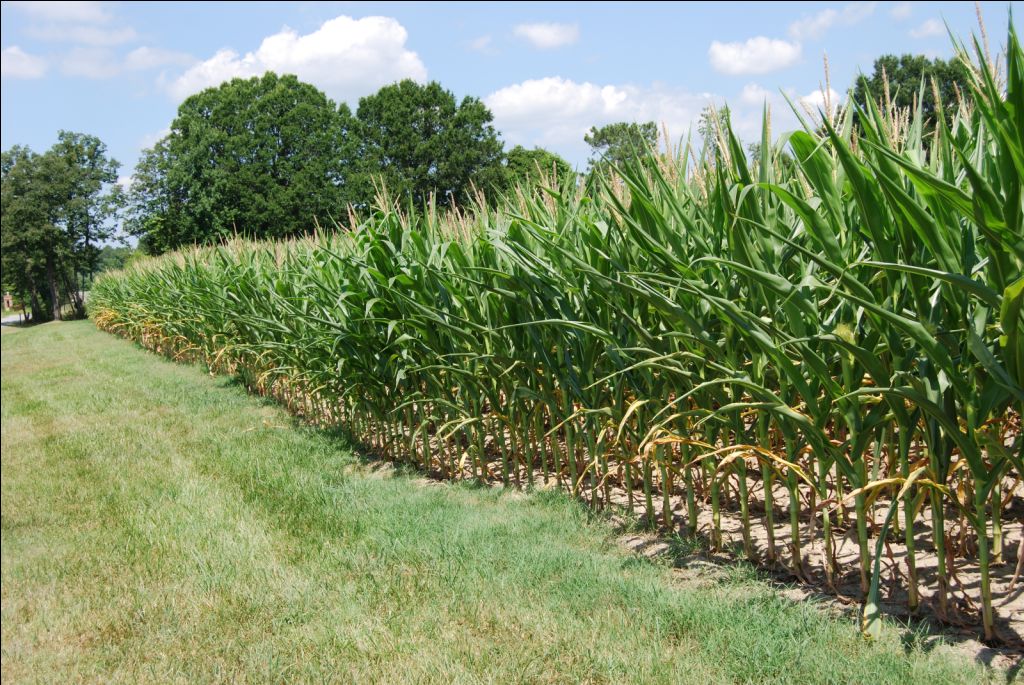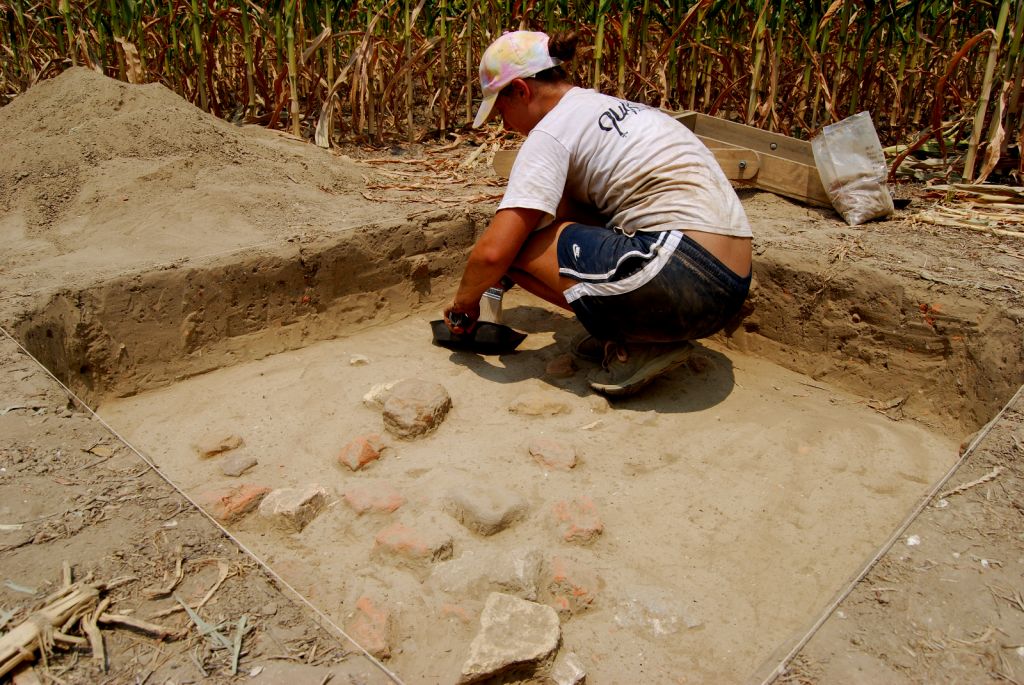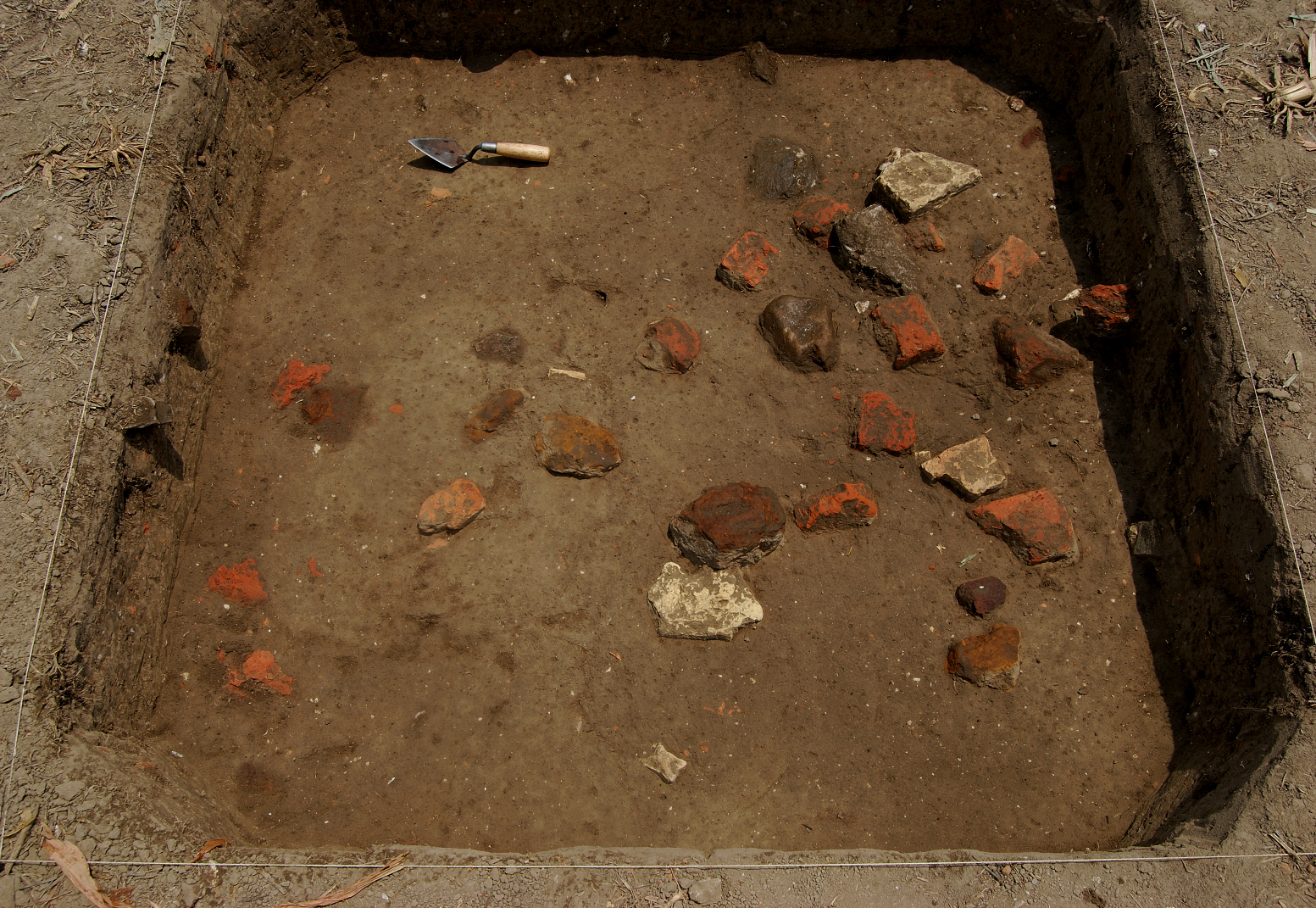Fendall/Digges Plantation (18CH805)
Introduction
 View of the Wicomico from the Fendall site (St. Mary's College of Maryland)
View of the Wicomico from the Fendall site (St. Mary's College of Maryland)
The Josias Fendall Site (18CH805) is located on Charleston Creek, a small tributary of the Wicomico River,
in Charles County, Maryland. The site was first occupied ca. 1670 by Josias Fendall, a former militia captain
and governor of Maryland who earned Lord Baltimore's displeasure in 1658 when he called for the abolition of
the Upper House of the assembly. Although Fendall was sentenced to death for what Baltimore considered treason,
Baltimore allowed his former governor to remain in Maryland provided he refrain from engaging in politics.
In 1670, Fendall acquired 700 acres of land from Walter Bayne; the land was conveyed to Fendall through his
minor son, Henry. Where Fendall and his family were living before 1670 is unknown but it was almost certainly
in the vicinity. Artifacts recovered from the site suggest that Fendall began developing the property right
away, and he, his wife, and their five or six children were soon living there.
Although Fendall had managed to stay out of politics, following Baltimore's orders, in the mid- to late 1670s he again began
agitating against the proprietary government. Cecil Calvert, the second Lord Baltimore, had died in 1675
and his son, Charles, had inherited both his father's title and the proprietorship of Maryland. Taking
advantage of the unrest in Virginia as a result of Bacon's Rebellion, Fendall spread rumors about the
Catholic Calverts joining forces with the French and Indians to slaughter the Maryland Protestants. Fendall
also threatened the proprietor on a number of occasions. He was taken into custody, tried for his seditious
behavior and, in 1681, banished for good from the colony.
Baltimore's son-in-law, William Digges, the son of a former governor of Virginia, acquired the property,
offering to purchase the property for a fair price but then never paying Fendall. Digges, his wife, Elizabeth,
their three or four children, and their servants and slaves were already ensconced at Notley Hall, across the
Wicomico River from Fendall's plantation.
Digges promptly renamed the property Charles Towne in honor of Lord Baltimore and began developing the site
as a port or town. An "Act for the Advancement of Trade," passed in 1683, called for a town in Charles County
"[i]n Wycocomoco River, att or neer Hattons Poynt." The northern boundary of Digges' land was along Hatches
Creek, also known as Hatton Creek. Digges formed a partnership with Gilbert Clarke in 1686, with Clarke ordered
to build an ordinary for "horse and man" at Charles Towne. This ordinary was built; another lot, known as "Lot 12,"
was acquired by Anthony Neale and also appears to have been improved.
In 1689, a group of Protestant rebels (including many associates of the by-now-deceased Josias Fendall) seized the
state house at St. Mary's City and Baltimore's plantations at Mattapany and Notley Hall. Digges and his family
were forced to flee to Virginia (possibly to stay with members of the Brent family) while Notley Hall was turned
into a prison for Calbert sympathizers.
Digges and his family eventually returned to Maryland in 1692 or shortly thereafter, moving into the "Great House at
Charles Towne." Digges died in 1697, leaving a large estate detailed in a probate inventory that included 23 enslaved
individuals of African descent. Elizabeth Digges died in 1710, still living in the "Great House at Charles Town," and
her estate included 19 enslaved people, at least two who could be identified in her husband's estate inventory.
The property appears to have been abandoned after Elizabeth Digges' death in 1710.
Archaeological Investigations
 Troweling Test Unit 1, Bottom Stratum A (St. Mary's College of Maryland)
Troweling Test Unit 1, Bottom Stratum A (St. Mary's College of Maryland)
The Josias Fendall site was first identified in 2010 when Charles County businessman and historian Michael
Sullivan supported research to identify where Fendall had lived in Charles County. St. Mary's College of
Maryland archaeologists Julia A. King and Scott Strickland visited the site, now in an agricultural field,
and observed colonial artifacts on the ground's surface. King and Strickland subsequently undertook a shovel
test survey of the field, with shovel tests spaced at 25- and 100-foot intervals. An arbitrary grid was established
on the site because a poor satellite signal foreclosed the opportunity to align the grid with Maryland State Plane.
The fill from all shovel tests was screened through ¼-inch mesh and all artifacts were kept. The shovel tests
revealed a plow zone over subsoil and heavy concentrations of artifacts, including red and yellow brick and plaster.
 Plan view, Test Unit 1, Bottom of Stratum A (St. Mary's College of Maryland)
Plan view, Test Unit 1, Bottom of Stratum A (St. Mary's College of Maryland)
Three 5-by-5 foot excavation units were placed in areas of high artifact concentration. The plow zone was
excavated by hand and screened through ¼-inch mesh; all artifacts were kept. Test Unit 1 included a linear
feature running on an apparent northwest-southeast orientation; the feature's fill was characterized as a
brown loam with red and yellow brick bats and fragments and sandstone fragments. None of the brick was articulated,
and this feature may represent an architectural feature that was later robbed. Test Unit 2 contained what may
be an unusually large post hole with a post mold. Test Unit 3 contained no features. All features were mapped
and photographed but not excavated. All three units were backfilled at the end of the project.
Artifacts
A total of 45,730 artifacts were recovered from the Fendall site, including architectural and domestic materials.
Brick (n=11,398), plaster/mortar (n=1,901), iron nails (n=585), and shell (n=29,201) form the largest categories
of materials. The assemblage also includes a number of 19th- and 20th-century artifacts; these materials are
spatially distinct from the colonial occupation and derive from a later occupation of the property beginning
in 1819 and continuing through the 20th century.
The remaining colonial artifacts include white clay tobacco fragments (n=519), Indigenous- and locally-made
European-style red clay tobacco pipe fragments (n=16), colonial ceramics (n=459), colonial bottle glass
(n=105), and colonial table glass (n=4). Two copper alloy furniture tacks, a copper alloy button, a copper
pin, and a possible iron table knife fragment were also recovered.
Tobacco pipe marks and decorations include a white stem with a Bristol dot and diamond pattern, a
white stem with the initials, "RT," for one of the three Robert Tippets, and a red stem with the
initials, "WD." "WD" is an unknown local maker whose marked pipes have been found at St. John's in
St. Mary's City, Fair Fountain, Notley Hall, and the John Washington site. The "WD" could stand for William Digges.
Ceramics include tin-glazed earthenware, Morgan Jones earthenware, Staffordshire slipware,
Manganese Mottled earthenware, North Devon Sgraffito ware, North Devon gravel-tempered ware,
Buckley and Buckley-like earthenware, Rhenish brown stoneware, Rhenish gray stoneware (Hohr ware),
Rhenish blue and gray stoneware, English brown stoneware, and dipped white salt-glazed stoneware.
Bottle glass includes both case and wine bottle glass.
Architectural artifacts include red and yellow brick, plaster/mortar, iron nails,
29 window glass fragments, four window lead fragments, and 85 fragments of dressed stone.
Although red brick predominates, 1,519 yellow brick fragments were recovered, suggesting a
significant and even exceptional use of yellow brick in one or more buildings on the site.
It is possible that these yellow brick came from a Swedish ship whose cargo was seized and
impounded at Notley Hall in 1672; either Fendall or, later, Digges may have shared in the
redistribution of this brick among the colonists.
One of the more interesting artifact types recovered from the Fendall site are 83 coral fragments.
Coral requires warmer and saltier waters than that found in the Chesapeake Bay, and the coral
recovered from the Fendall site probably came as ballast via ships trading in the West Indies.
References
Strickland, Scott M., and Julia A. King. 2011.
An Archaeological Survey of the Charleston Property: Josias Fendall's
Dwelling Plantation. St. Mary's City: St. Mary's College of Maryland.
What You Need To Know To Use This Collection
The Fendall/Digges site represents two occupations, including by the Fendall household (1670-1681) and the Digges
household (1681-1710). Units include shovel tests and three 5-by-5-foot test units. Soils were screened
through 1/4-inch mesh.
Further Information About the Collection
The Josias Fendall Site collection is owned and curated by the Maryland Archaeological Conservation Lab.
For more information about the collection, contact Rebecca Morehouse, Curator of State Collections, at
410-586-8583 or rebecca.morehouse@maryland.gov.
To Download Data
Data and a variety of other resources from this site are available for download. To download data,
please go to the Downloads page.